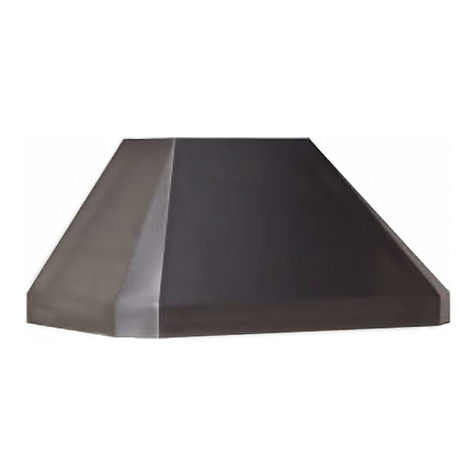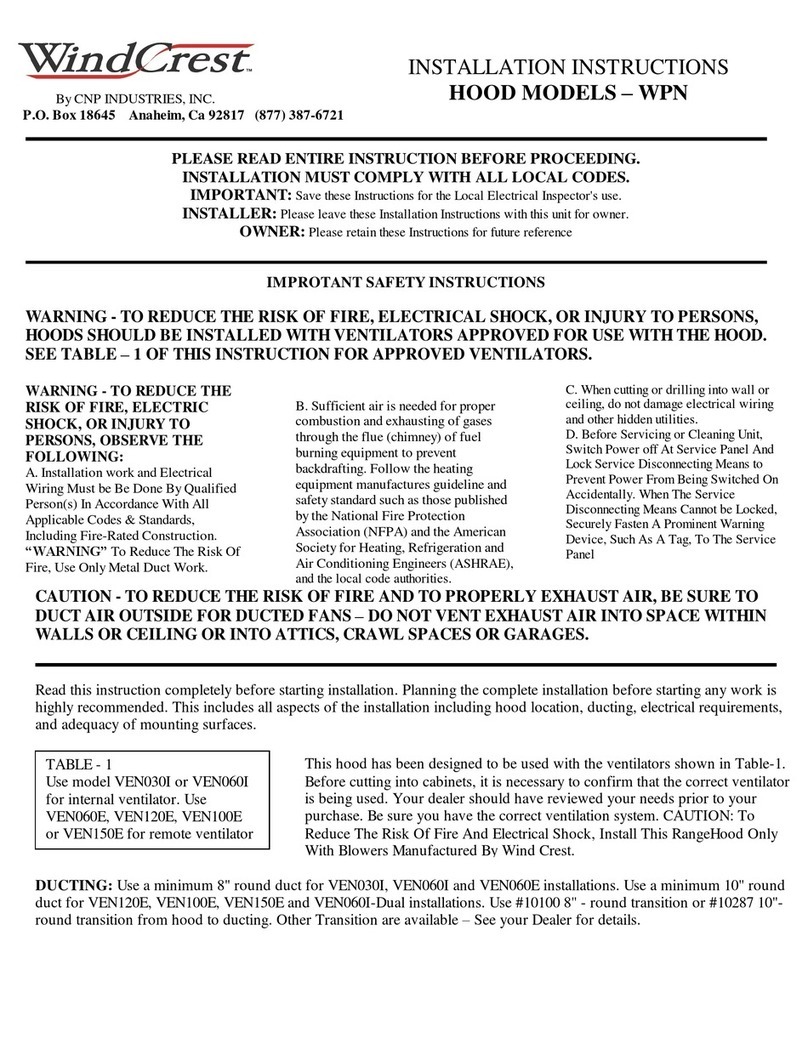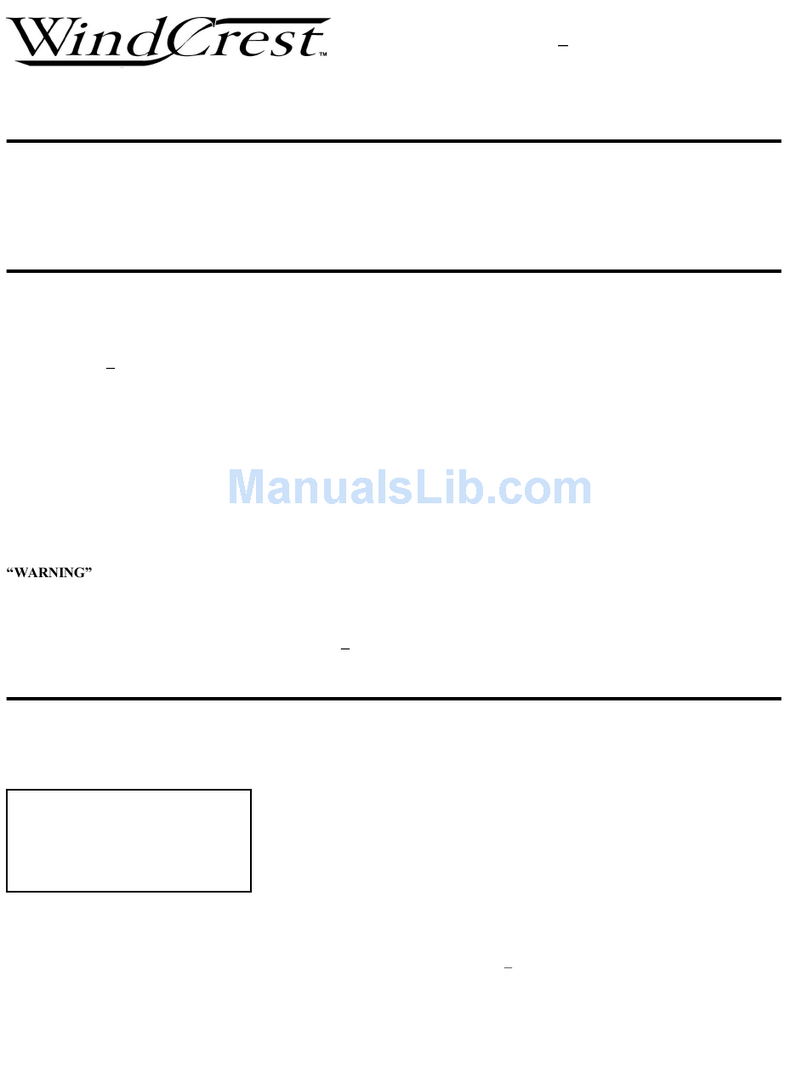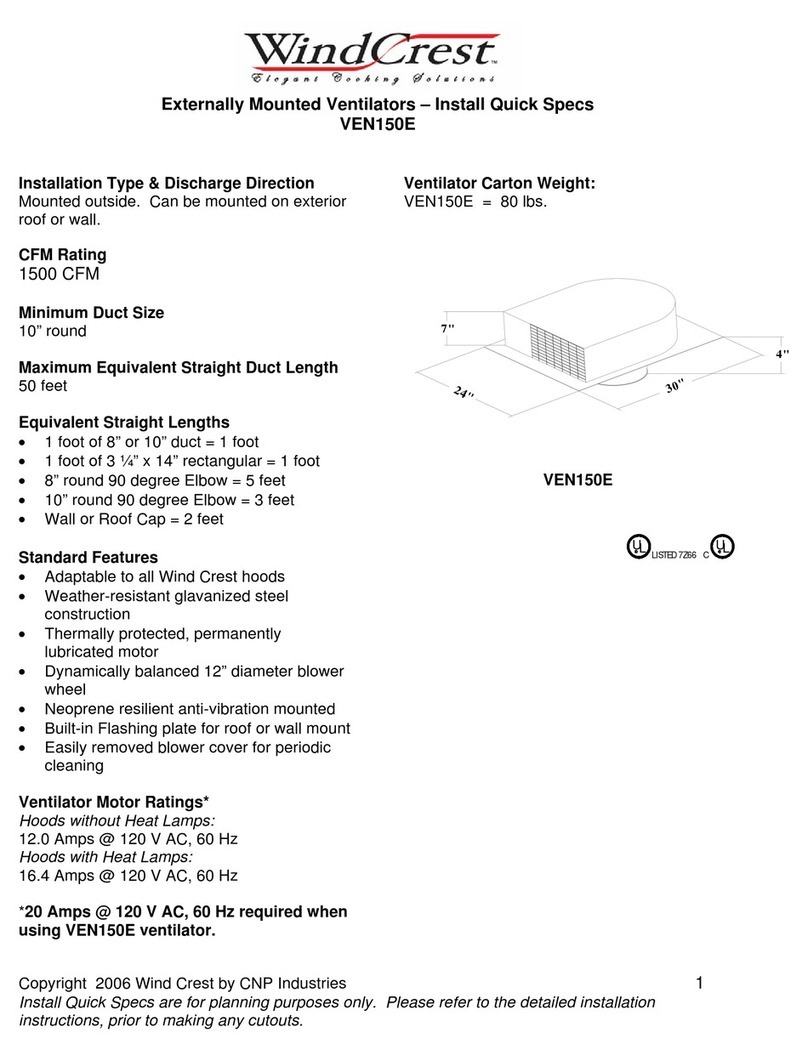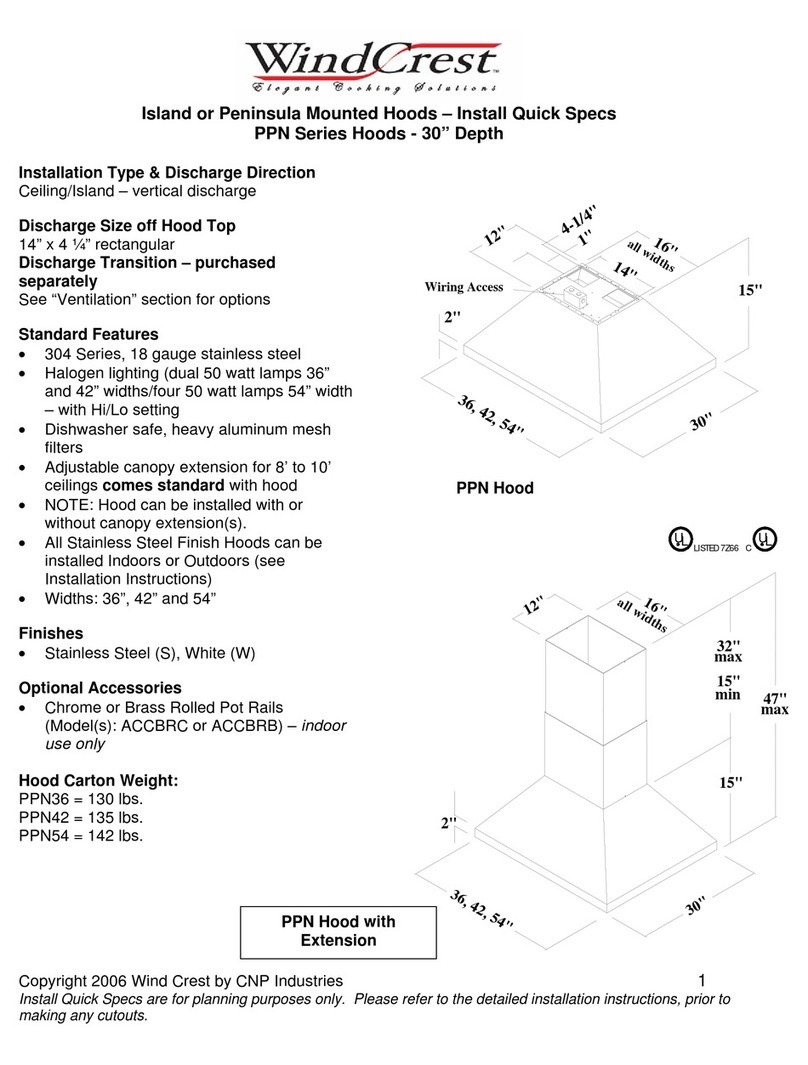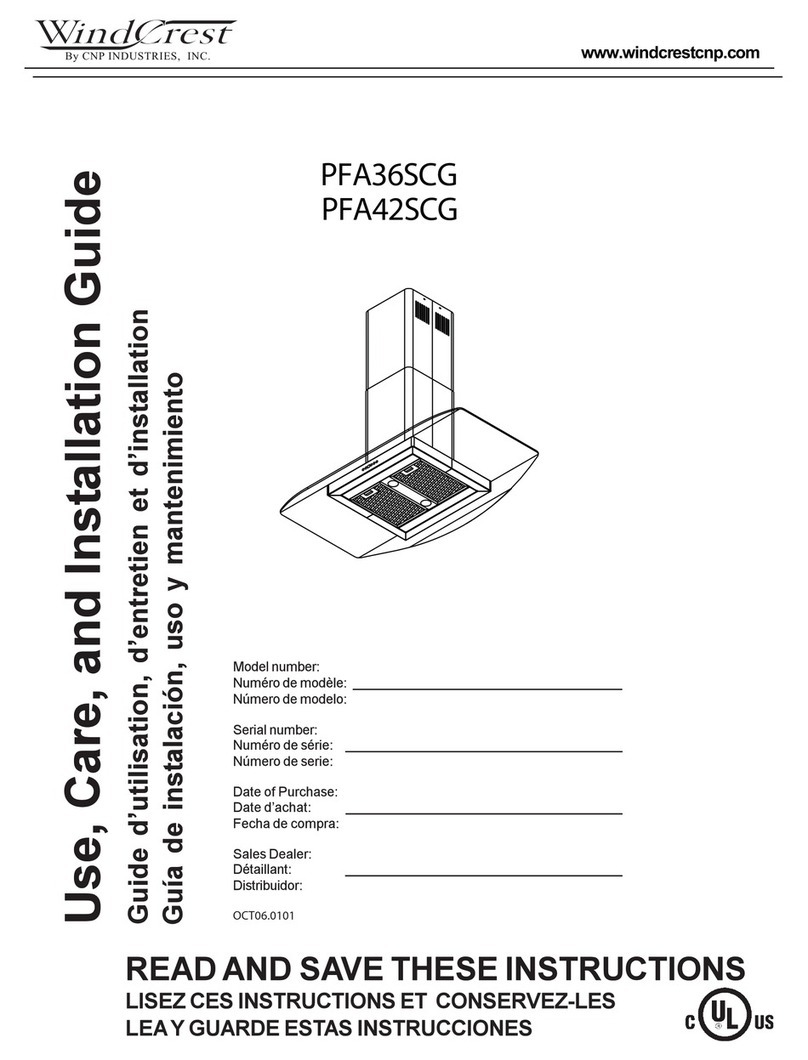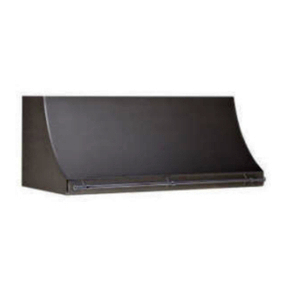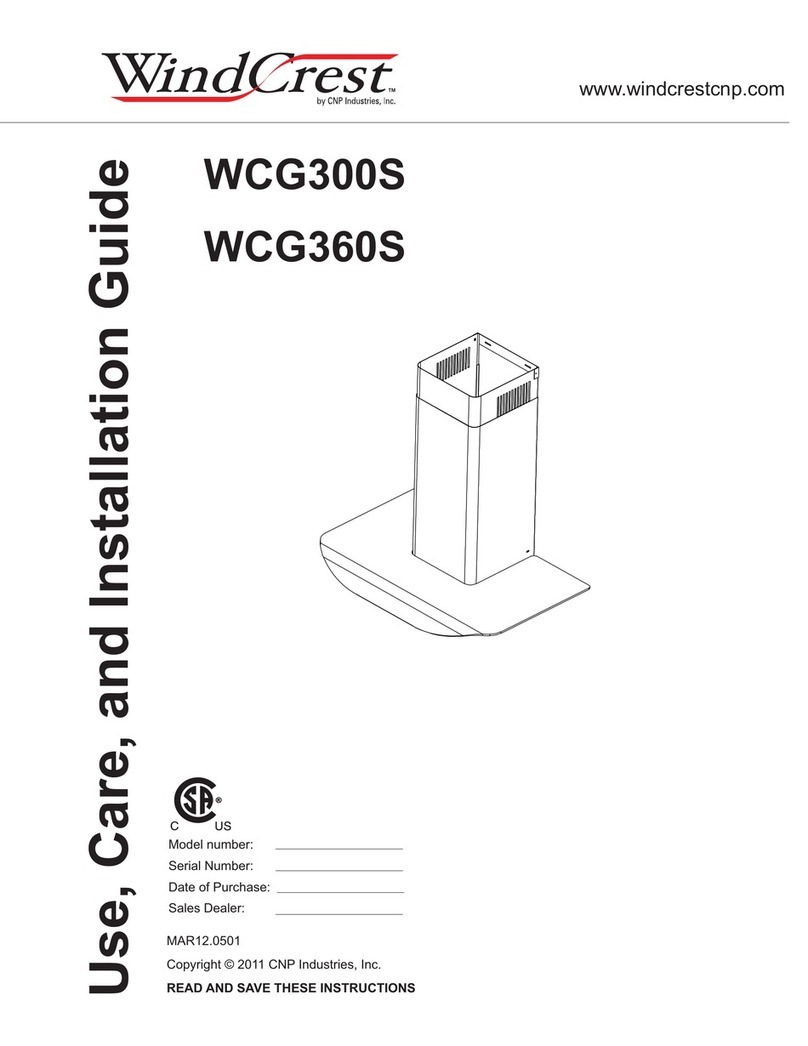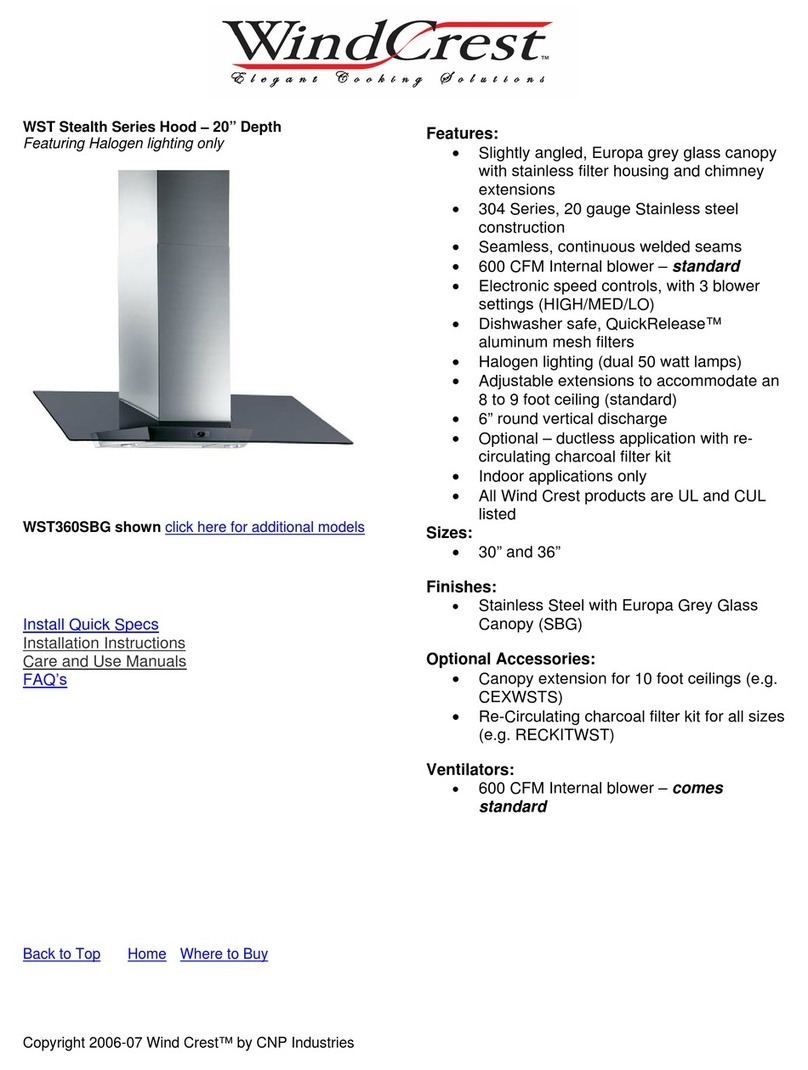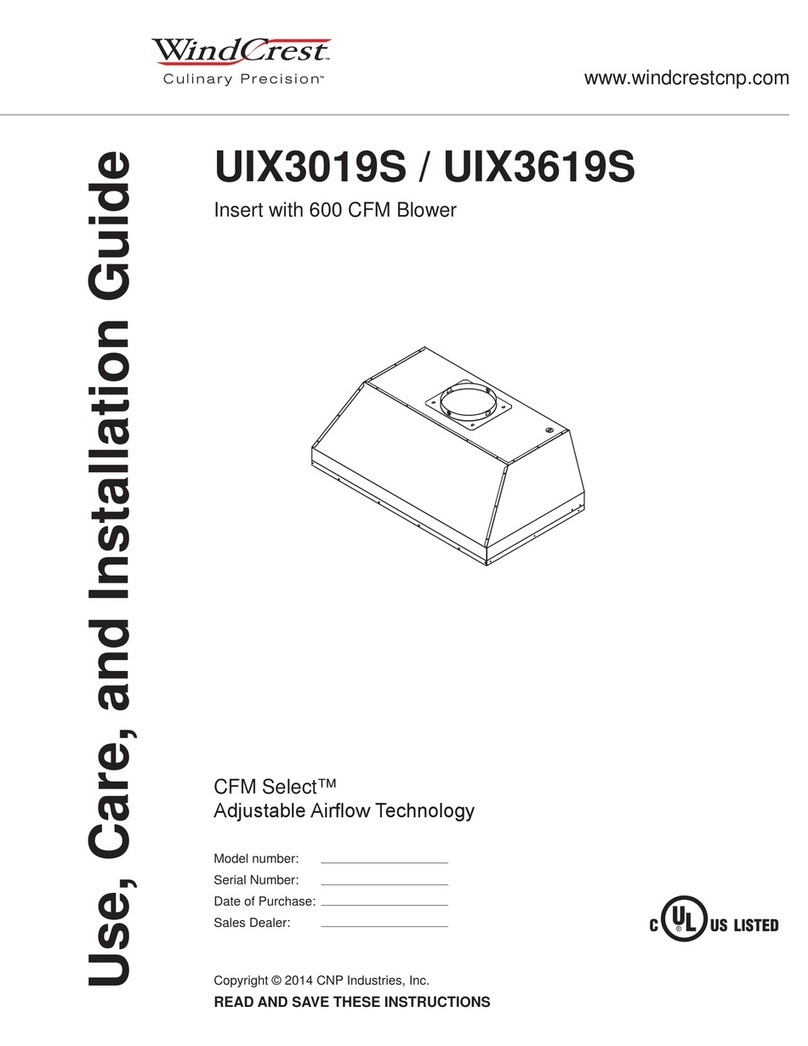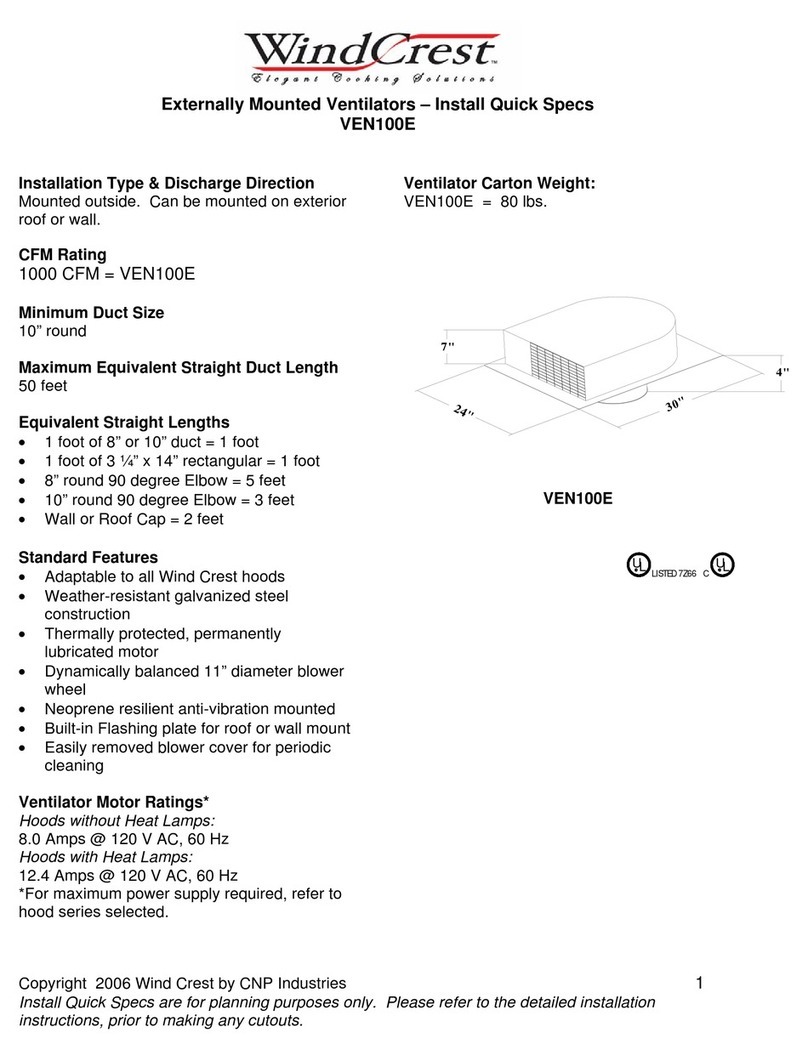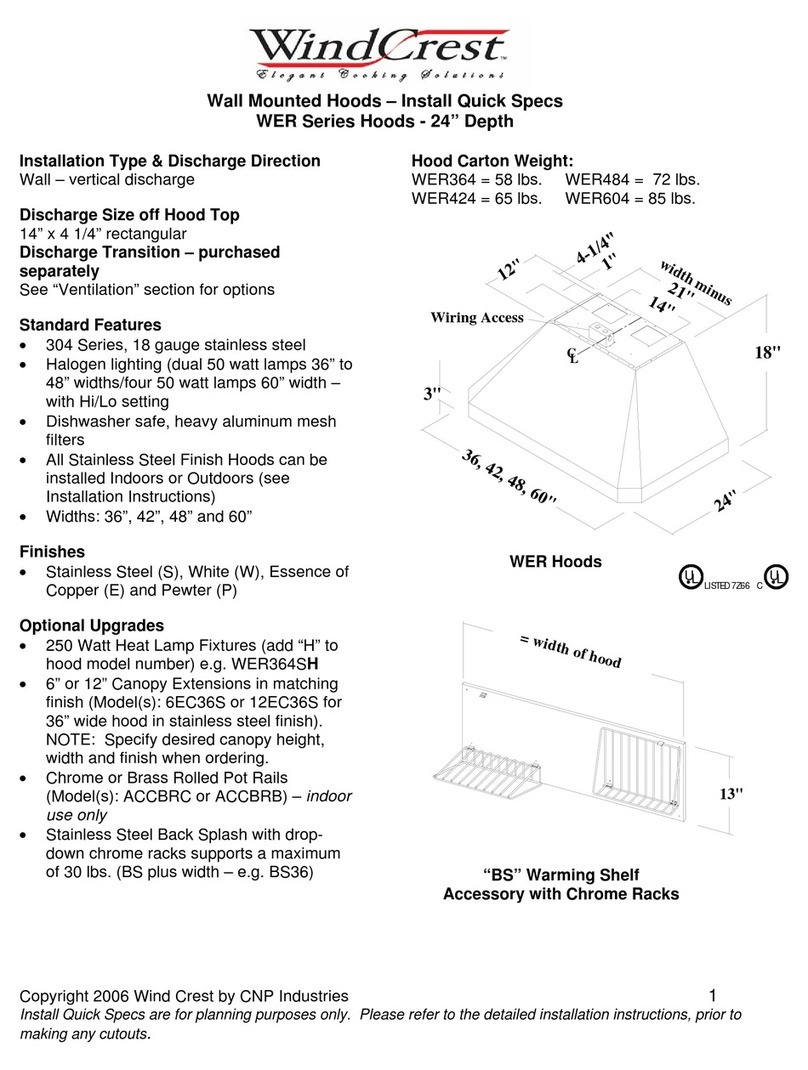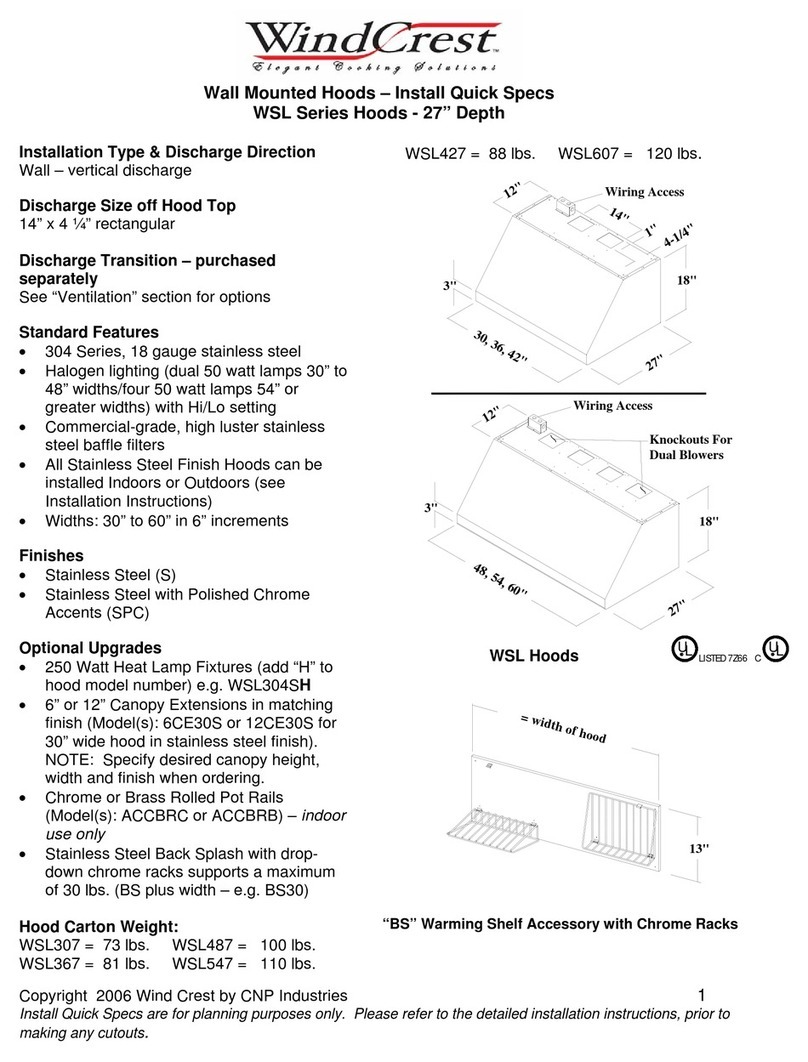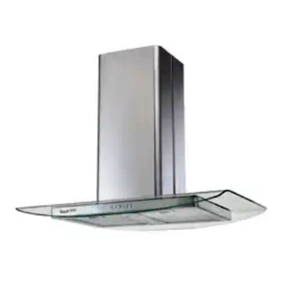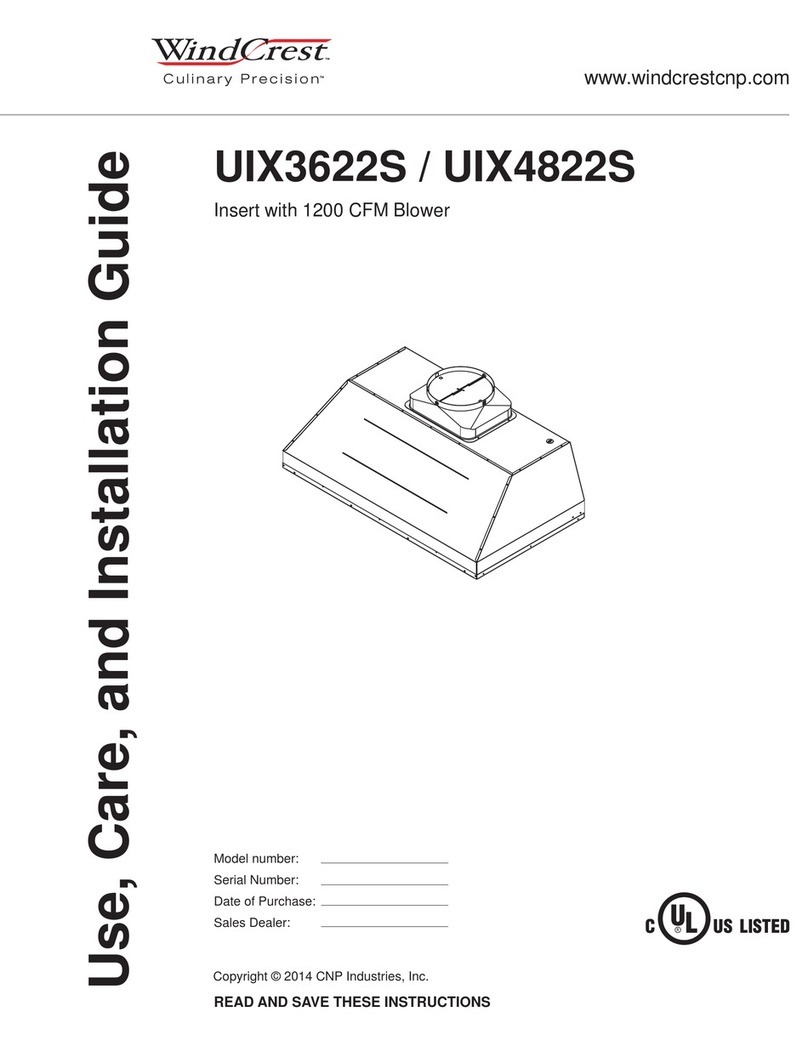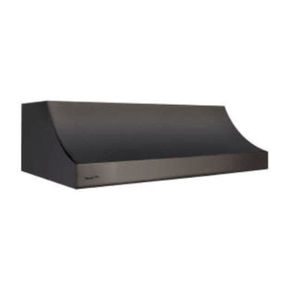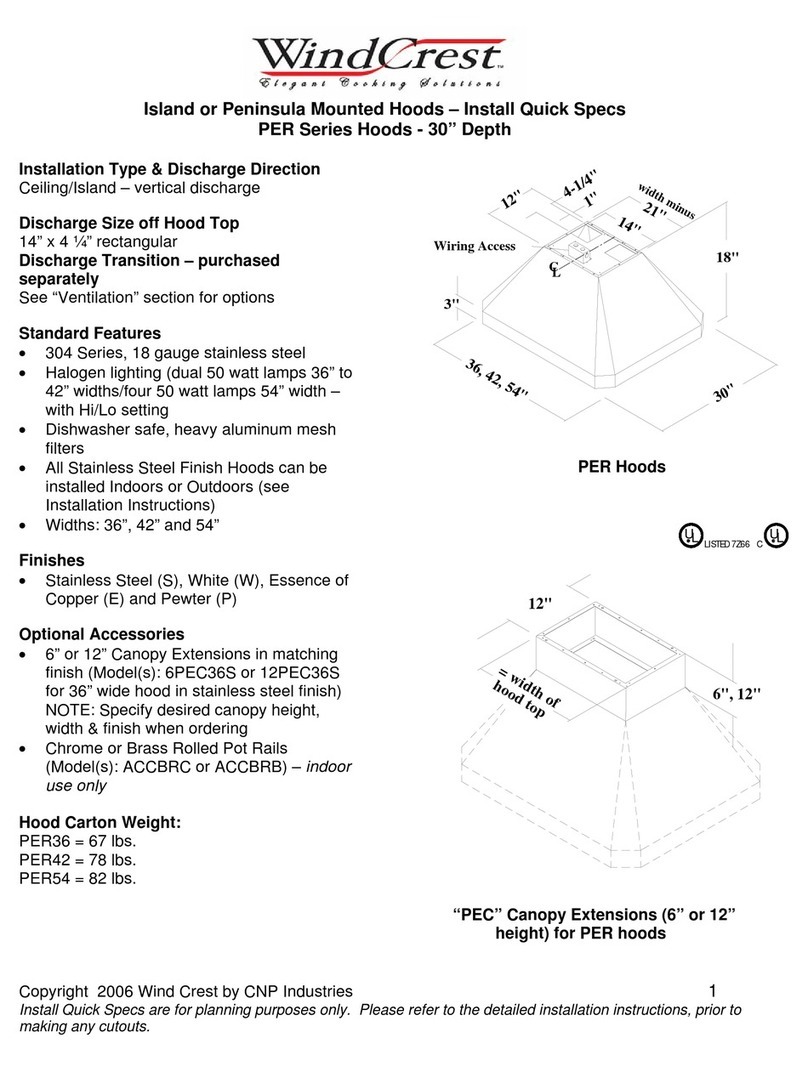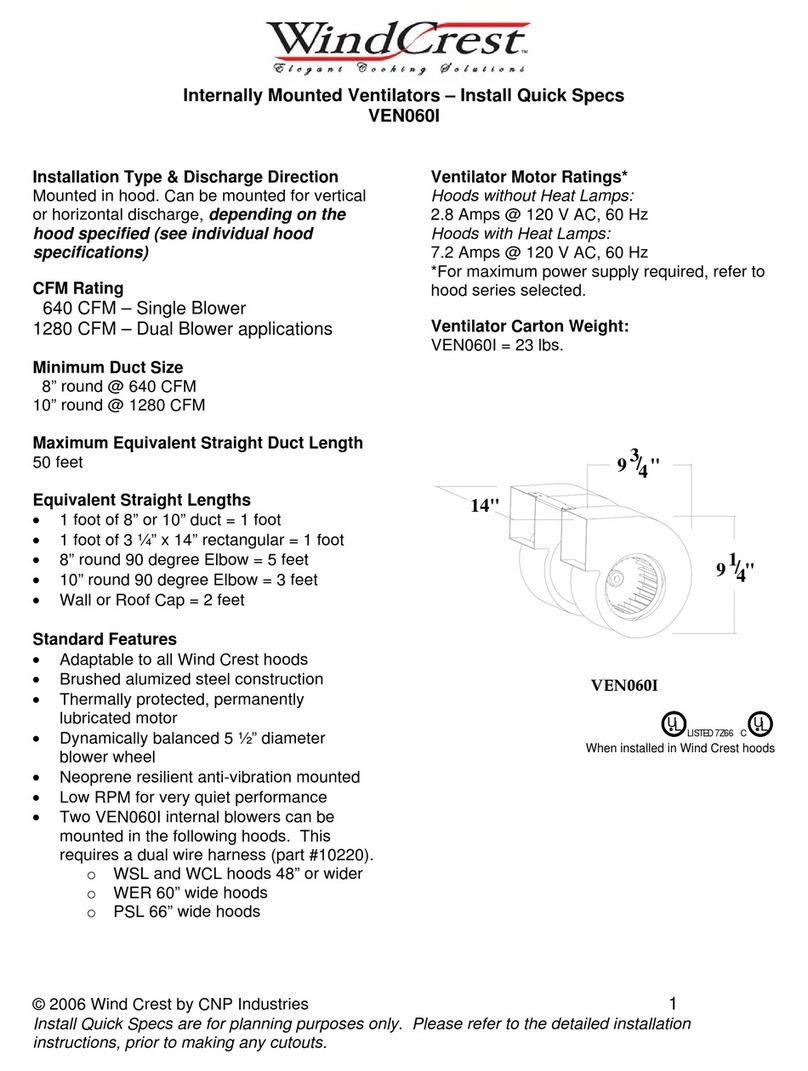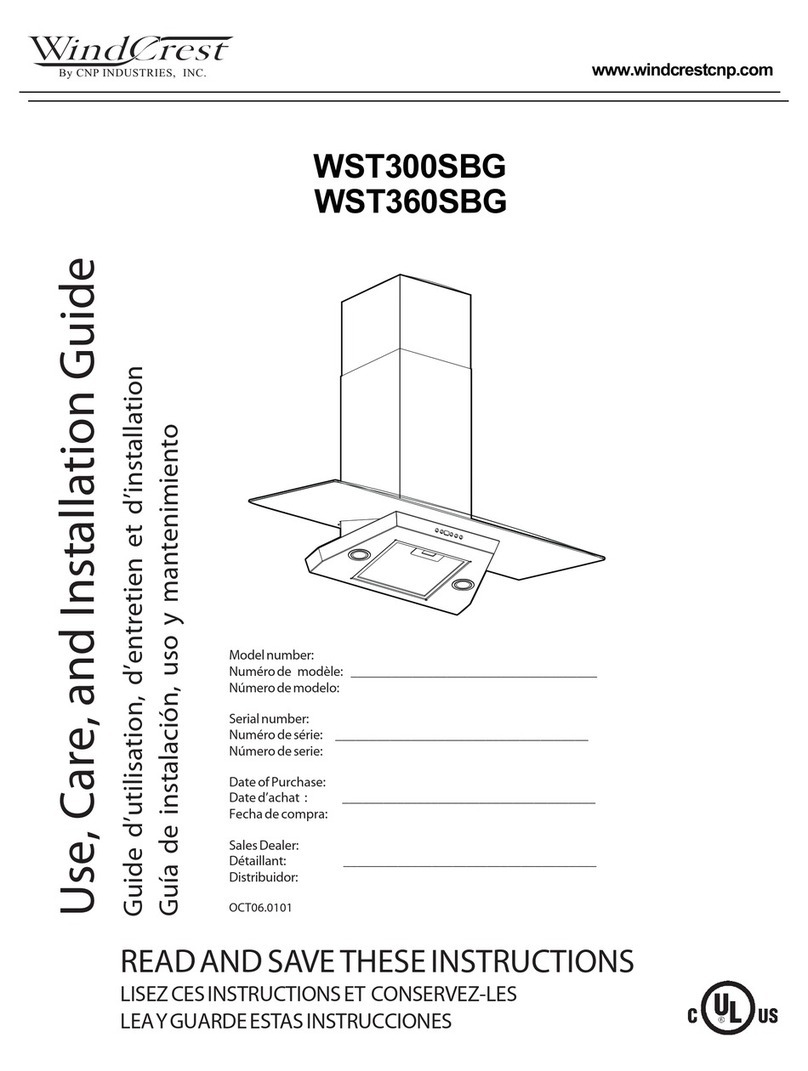
2 of 9 Rev A
.
NOTE: Unit must be vented
to outside of the building.
BEFORE STARTING INSTALLATION, YOU MUST IDENTIFY THE VENTILATOR MODEL BEING USED
AND IF A TOP OR REAR EXHAUST IS TO BE USED.
NOTE: VEN120I cannot be used in rear exhaust applications or on Models with Heat-
Lamps.
Prepare cabinet and/or wall for mounting either top (Fig -
3) or rear (Fig - 6) exhaust. Use furring strips to level
cabinet mounting surface with any cabinet trims.
For knock out removal see Fig- B
Remove See
Ventilator Model Knock out # Transition # Fig
VEN060I Top Exhaust 2 10100.00 1,3
VEN120I Top Exhaust 2 & 3 11257.00 2,3
VEN100 & VEN150 2 & 3 11257.00 3
External, Top Exhaust
VEN060I Rear Exhaust 1 11254.00 4,5,6
Break the metal webs by placing a screwdriver at one
corner of the plate and hitting screwdriver sharply with a
hammer. After breaking a second web the plate can be
flexed to break other webs.
Wear eye protection when using tools.
Caution: When knock outs are removed
the edges will be sharp!!!!!!!!! Sharp Edges
should be Filed or Covered with Metal
Tape.
Attach and secure the transition to the hood with #6x3/8
sheet metal screws and tape all joints prior to installing the
hood. Attach hood to cabinet using #10 wood screws. If
duct cover is used refer to Instructions on Page –6. Holes
are located in the back panel and top panel of the hood for
mounting. Use a minimum of four #10x3/4 wood screws
to mount the hood. Longer screws are required if wall
board or other nonstructural surfaces are used between the
hood and main mounting surface which should be a
minimum of 3/4”thick. When using rear holes for
additional mounting use appropriate anchors if not
engaging the wood structure.
HINT: If you find vibration noise is present because of
cabinet structure use additional screws, in holes available,
to make the mounting more ridged.
Connect 120 volt, 60 Hz power through the conduit hole
in top of hood, connecting to pigtail in hood junction box,
white to white, black to black and connect green ground
wire to the power supply ground wire per local codes. See
Fig –A.
The recommended height from countertop or cooking
surface to the bottom edge of the hood is 30 to 36 inches.
Hood is recommended for use over domestic gas or
electric appliances. Not recommended for use over solid
fuel fired appliances.
After installing the hood, install the internal blower
(Top Exhaust See Fig 1 & 2; Rear Exhaust See Fig -
4) unit by positioning the blower onto bracket-A,
notched blower bracket will center blower. Rotate
into position against hood and secure Bracket –B to
Hood with #8 sheet metal screws. If the remote
ventilator is used see related instructions and Fig - 3.
The VEN100E/150E ventilator will require revision
of some wiring in the hood receptacle box - See
VEN100E/150E instructions.
NOTE: VEN150E requires a dedicated 20 AMP
Power Supply. All other ventilators require a
dedicated 15 AMP Power Supply
CAUTION: The hood is of sufficient weight that two
installers are recommended to prevent injury or damage to
the hood in handling.
Turn the power on at the service entrance and check the
operation of the controls.
NOTE: be sure that all dampers are operating properly
and are free to open.
: It is recommended that a backdraft damper
(#10288.00 for 8” round ducts, #10289.00 for 10” round ducts) be used in all
installations. In cold weather installations it is necessary to use a backdraft
damper to minimize backflow of cold air into room. A non-metallic thermal
break should also be used to minimize conduction of outside temperatures
through the ductwork. The thermal break should be located as close as possible
to where the ducting enters the heated portion of the house.
Turn off power circuit at
the service entrance and
lockout panel before
wiring the range hood.
